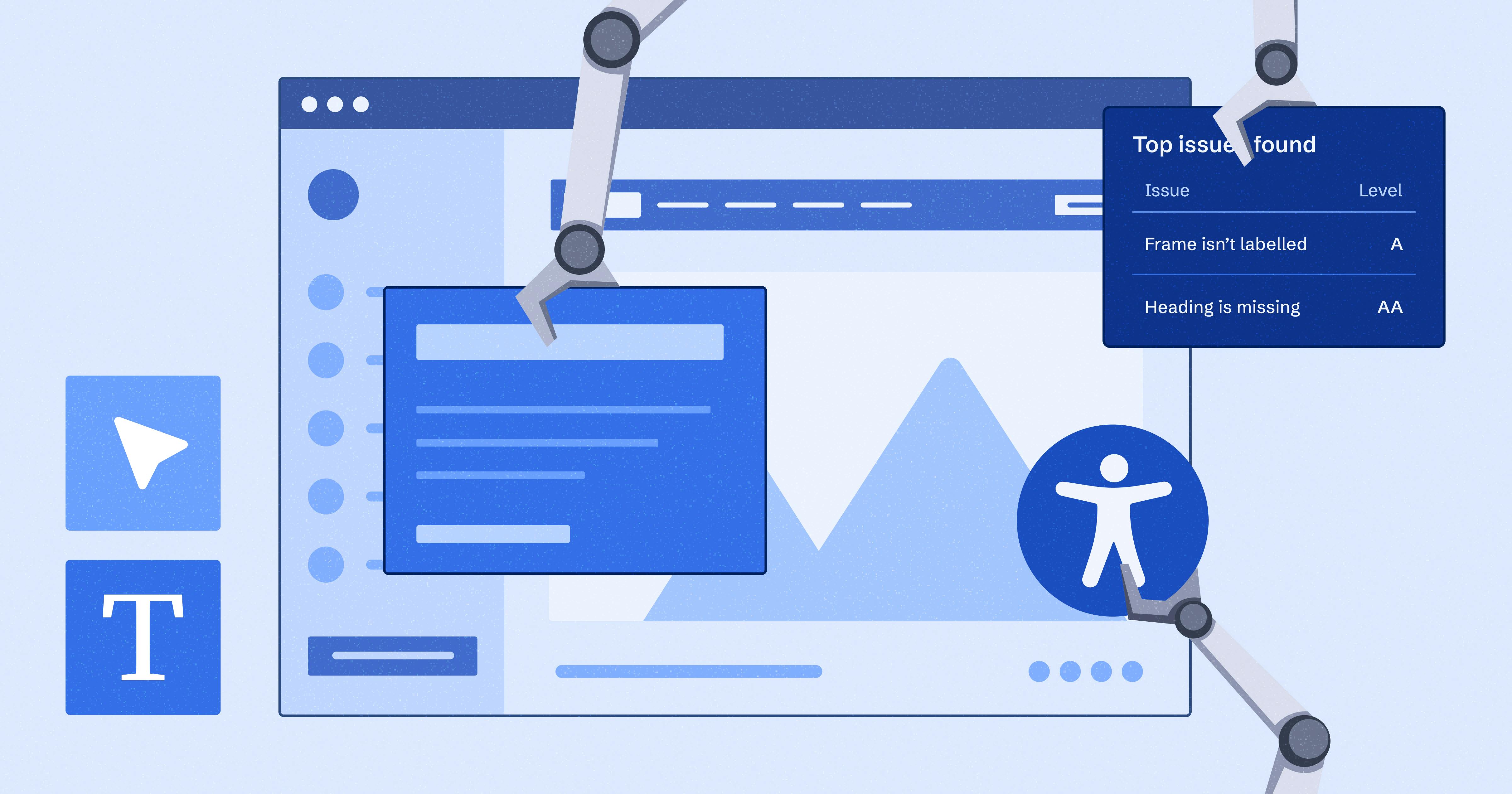Embracing an Accessibility-First Mindset: The Path to Accessibility Maturity


Ready to see AudioEye in action?
Watch Demo
AudioEye’s Chief Accessibility Officer, Mike Paciello, discusses how to adopt an accessibility-first mindset by creating and implementing an accessibility maturity model.
Accessibility in today’s digital world is a human right. With technology becoming increasingly more integrated into virtually every aspect of daily life, it’s vital that digital content, products, and services be accessible to all individuals.
Yet, too often accessibility becomes an afterthought among organizations — something to “tack on” after deadlines have been met and things have gone live. This puts both organizations and users at a disadvantage. Businesses are left exposed to accessibility errors that can result in legal actions while users are unable to access vast amounts of digital content.
Digital accessibility should not be an afterthought. It should be something that’s worked into the initial stages of the design and development processes so potential accessibility barriers can be addressed sooner.
Mike Paciello, Chief Accessibility Officer at AudioEye, stressed the importance of organizations adopting an accessibility mindset. He discussed how doing so enables businesses to create more accessible, usable, and equitable digital experiences that benefit all users — not just those with disabilities.
The first step to adopting this mindset: creating an accessibility maturity model. We’ll review the concept, including what it is and how to implement one, below.
What is an Accessibility Maturity Model?
The World Wide Consortium (W3C) defines an accessibility maturity model (AMM) as “an overall framework for establishing a robust information and communications technology (ICT) accessibility program and identifying areas for improvement.” The tool is designed to:
- Assess an organization’s current effectiveness and capabilities around accessibility.
- Identify gaps between the business’s current accessibility capabilities and the next level of accessibility maturity.
- Offer plans for how an organization can improve accessibility over time.
Most AMMs include levels of increasing accessibility maturity with each one containing a definition for accessibility, processes, and proof points.
The W3C’s maturity model is structured around seven important aspects — also called dimensions — of accessibility maturity. These include:
- Communications: How accessible a company’s internal and external communications are.
- Knowledge and skills: This refers to a company’s ongoing accessibility education and training as well as practices for filling accessibility gaps.
- Support: How businesses provide assistance to internal employees or external customers who have disabilities.
- ICT development lifecycle: Ensuring that accessibility is considered during the development process.
- Personnel: Creating accessible job descriptions, recruiting processes, and more to provide current and future employees with access to accessibility efforts.
- Procurement: The process of finding and acquiring accessible products needed in an organization.
- Culture: The behaviors, attitudes, and sensitivity towards accessibility. This includes internal interaction, decision-making, and perception.
Each of these dimensions contains proof points that can be used as evidence that an organization is at a certain level of maturity. For example, if an organization was improving accessibility and filling gaps in the ICT dimension, the proof point would most likely be a document containing the evaluation of ICT accessibility barriers or current skill levels or gaps.
4 Considerations to Make When Adopting an Accessibility Maturity Model
Implementing an AMM is a collective effort. Too often, businesses attempt to create and adopt an AMM that fails to take into account the unique structures and roles within the organization. This complicates the implementation and adoption process — and further delays organizations in their path to accessibility.
To ensure successful adoption, here are a few considerations to keep in mind.
1. Create an Accessibility Policy and Governance
The first step to adopting an AMM is to establish a comprehensive policy and governance structure. The policy should outline the organization’s commitment to accessibility and designate responsibilities to specific individuals for implementing and monitoring accessibility practices.
Mike discussed how creating these policies and governance can help to build a culture of accessibility within organizations. “We need to teach accessibility maturity,” Mike said. “By that, I mean we need to help [businesses] create a culture inside their organization that is very accessibility centric.” He went on to describe how this culture goes a long way in creating services that are “usable, accessible, and equitable to people with disabilities.”
2. Establish Accessible, Inclusive Hiring Processes
Organizations should ensure their hiring practices are inclusive and accessible to individuals with disabilities. Moreover, organizations should consider diversifying their workforce and bring on disabled employees wherever possible. This may involve organizations making changes to their hiring and recruitment practices to ensure accessibility. For example, businesses may need to provide training to hiring managers on inclusive recruitment practices or make accommodations throughout the hiring process as needed.
3. Partner with Accessible Vendors for Internal Tooling and Resources
Work with vendors who prioritize accessibility in their products and services. This may include conducting thorough accessibility evaluations of potential vendors and incorporating accessibility requirements into procurement processes. Including accessible tools and resources in existing processes increases accessibility and showcases the business’s commitment to accessibility.
However, Mike cautions that businesses should carefully consider various accessibility tools. “[Look at what they] can absolutely do,” Mike said. He went on to describe how many tools and resources market that they can “find every error on every website” when they’re actually unable to. Organizations should carefully evaluate the functionality of various tools prior to purchasing to ensure the vendor can help meet accessibility goals.
4. Create Accessibility Statements
Organizations should develop and publish accessibility statements that communicate their commitment to accessibility and their continued progress towards meeting accessibility objectives. Furthermore, organizations should provide information on how individuals with disabilities can access their products and services. These statements should then be prominently displayed on the organization’s website and other relevant platforms.
.jpg?ixlib=gatsbyFP&auto=compress%2Cformat&fit=max&w=1160&h=609)
Adopting a ‘Think Accessibility’ Mindset
For businesses looking to adopt an accessibility mindset, AMMs can be a good starting point. They can assist organizations in establishing a structured path that demonstrates a deep-rooted commitment to diversity and inclusion.
Said Mike: “We need to teach accessibility maturity. It helps to create a culture inside the organization that is very accessibility-centric.” He went on to say that by adopting this mindset — as well as following the recommendations above — organizations can easily build accessibility into key business processes.
“We won’t have to talk about shifting left because it will already be done,” Mike said. “Accessibility will be invisible — it will be a development norm that we’ll just do.”
Ready to see AudioEye in action?
Watch Demo
Ready to test your website for accessibility?
Share post
Topics:
Keep Reading

AI Accessibility Tools: Benefits, Limitations, Applications, and Recommendations
AI makes finding and fixing accessibility issues faster and easier, but do they ensure compliance and great UX by themselves? Here’s our verdict.
accessibility
March 31, 2025

Improving Healthcare Delivery: How Quality Tech Products are Shaping the Future of Care
Discover how high-quality tech products are transforming healthcare delivery, improving patient outcomes, and future-proofing the industry. Learn key tech innovations and why accessible, inclusive design is critical.
accessibility
March 26, 2025

Why an Accessibility Widget for Your Website Isn’t Enough — and What to Do Instead
Widgets seem like an easy way to ensure compliance with accessibility regulations, but your site/app needs more than they offer. Here’s how to approach it.
accessibility
compliance
March 25, 2025
